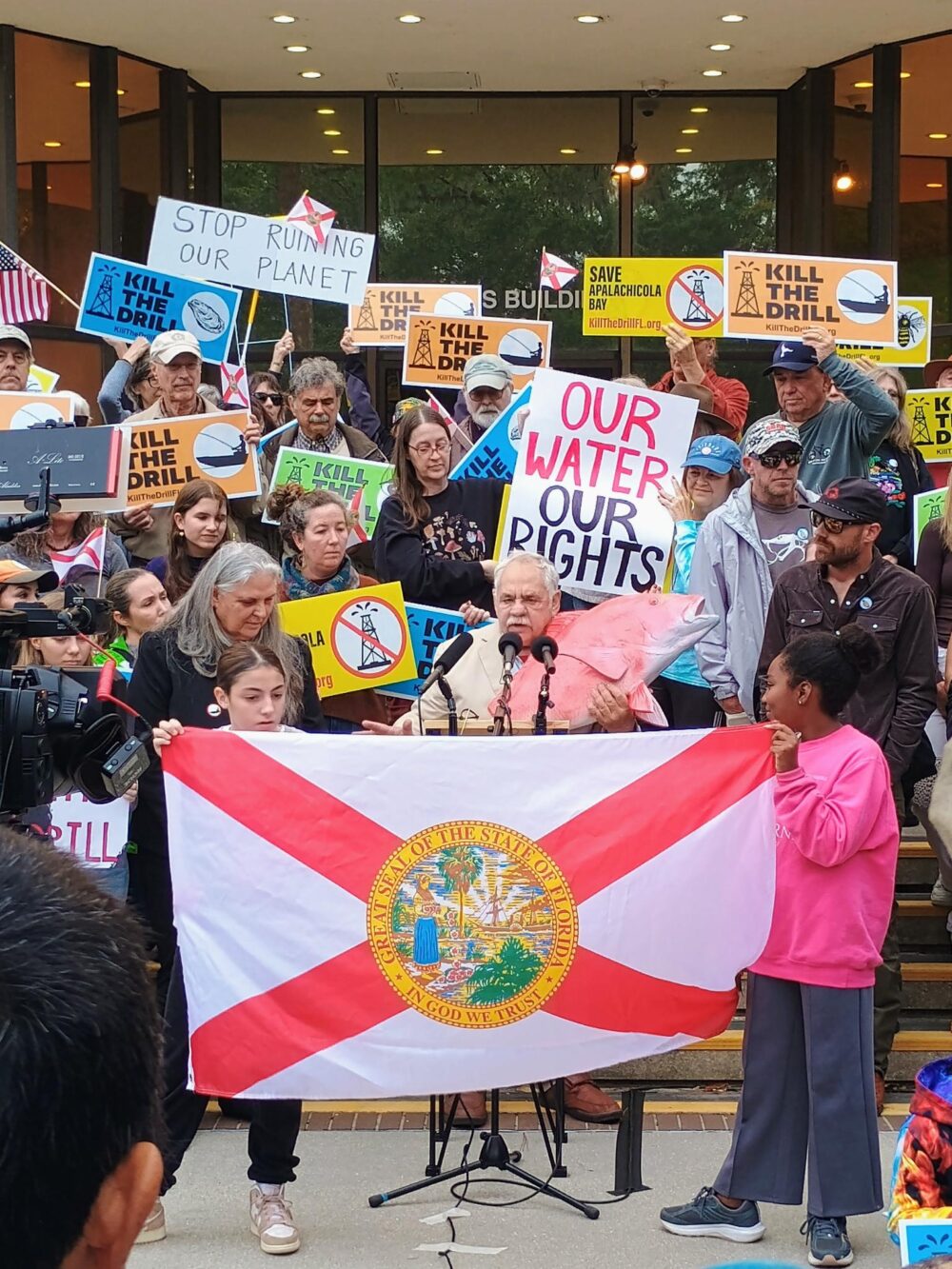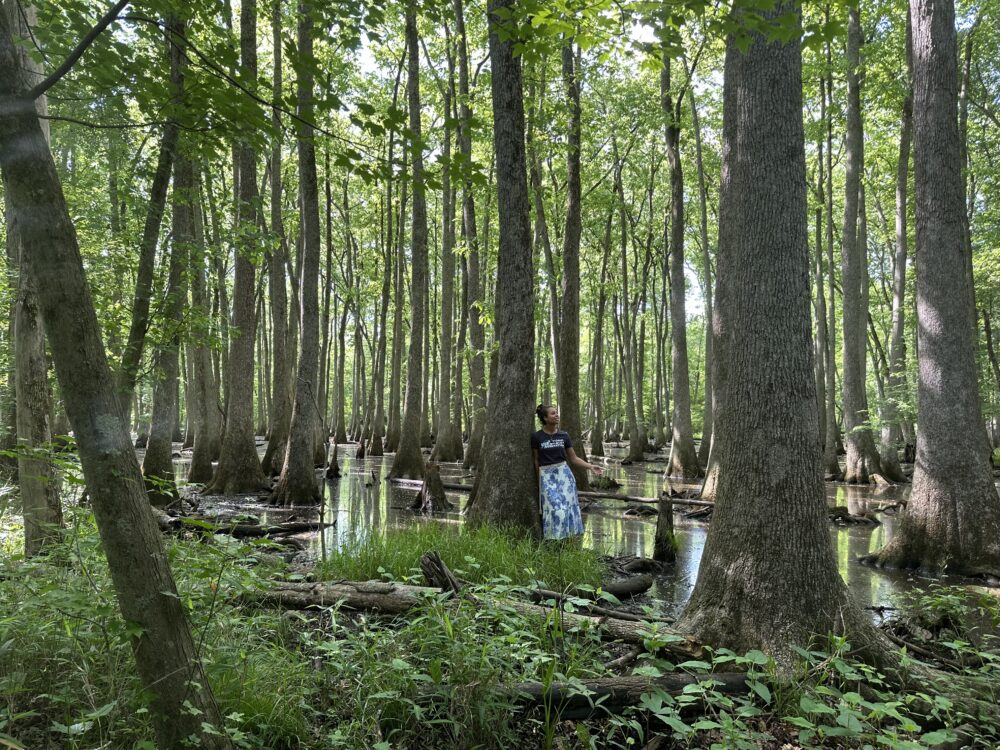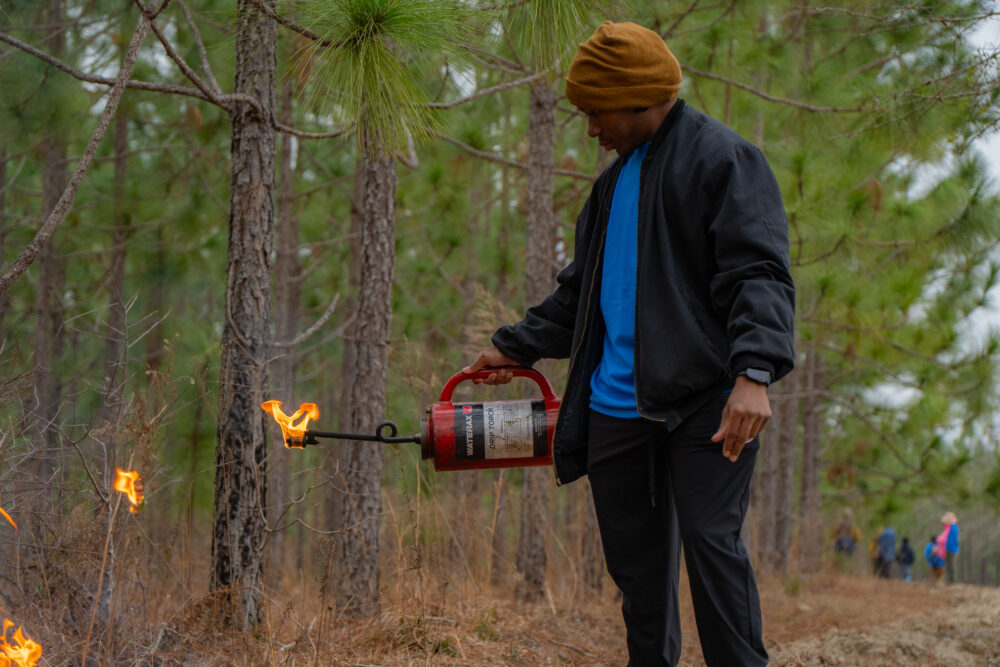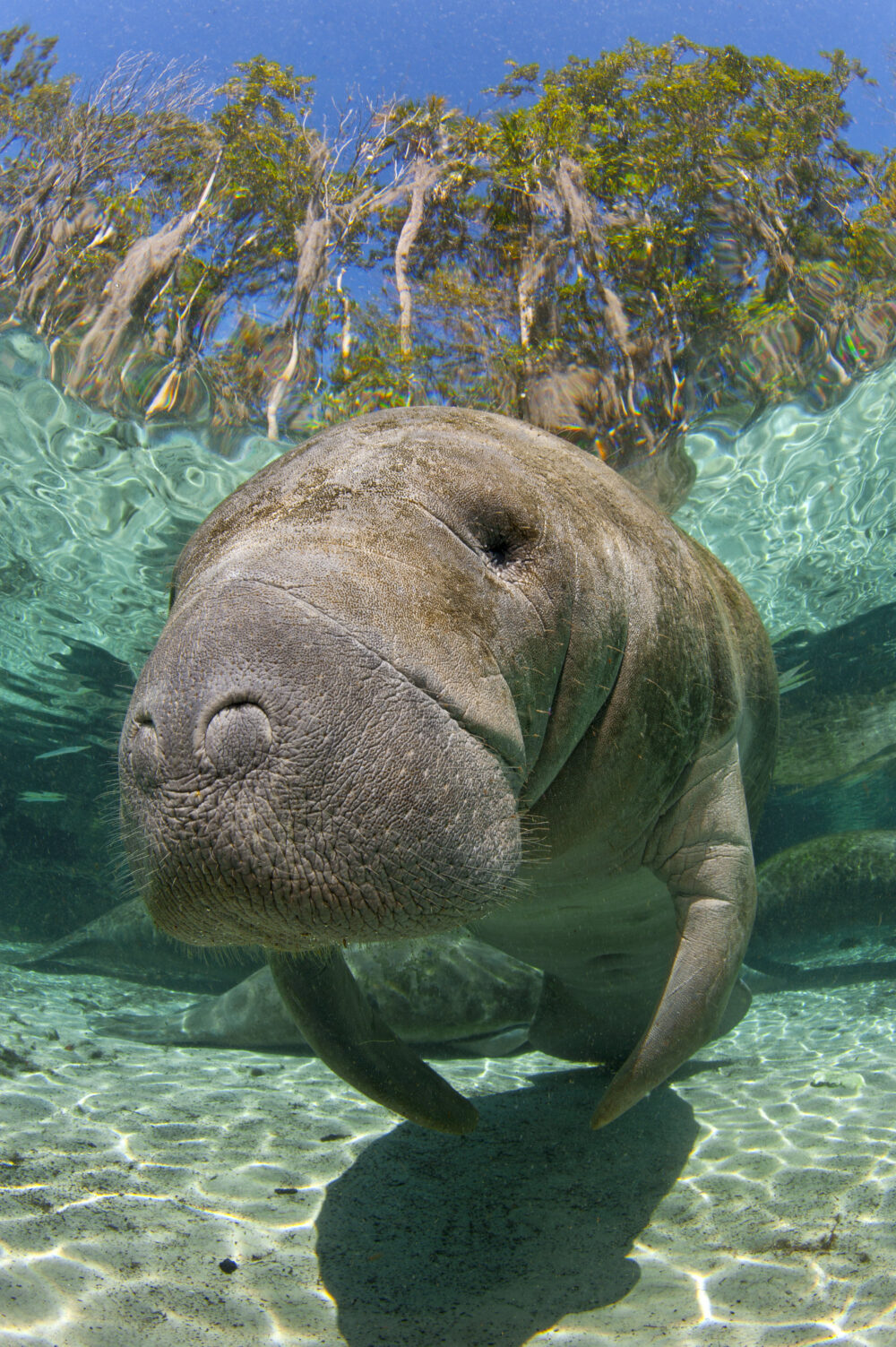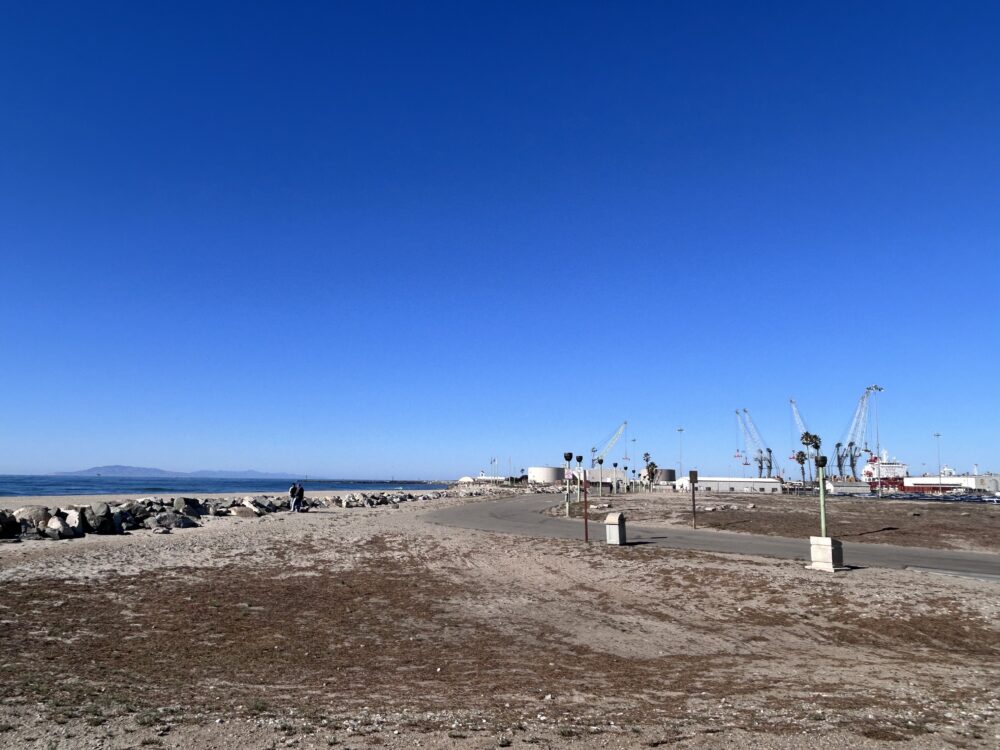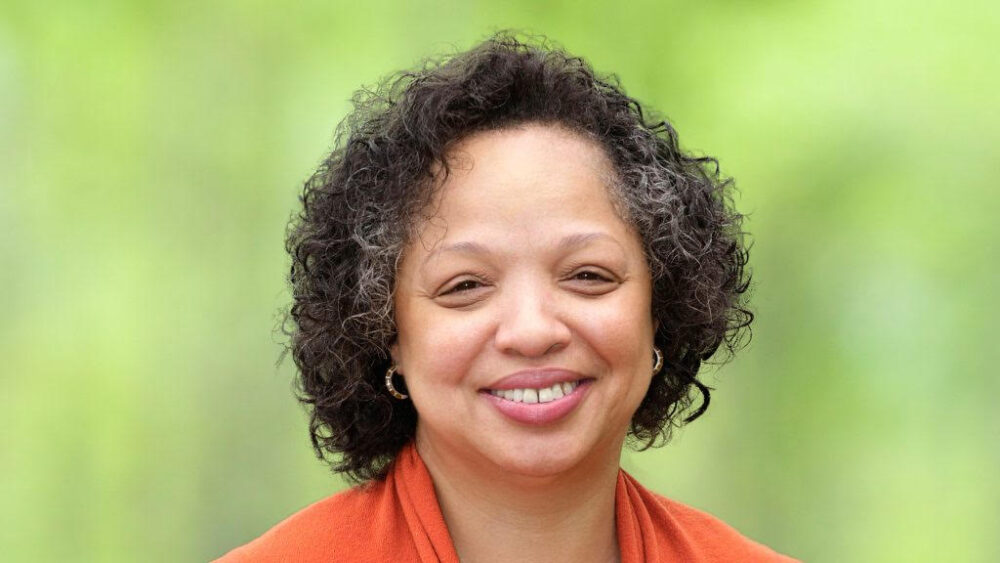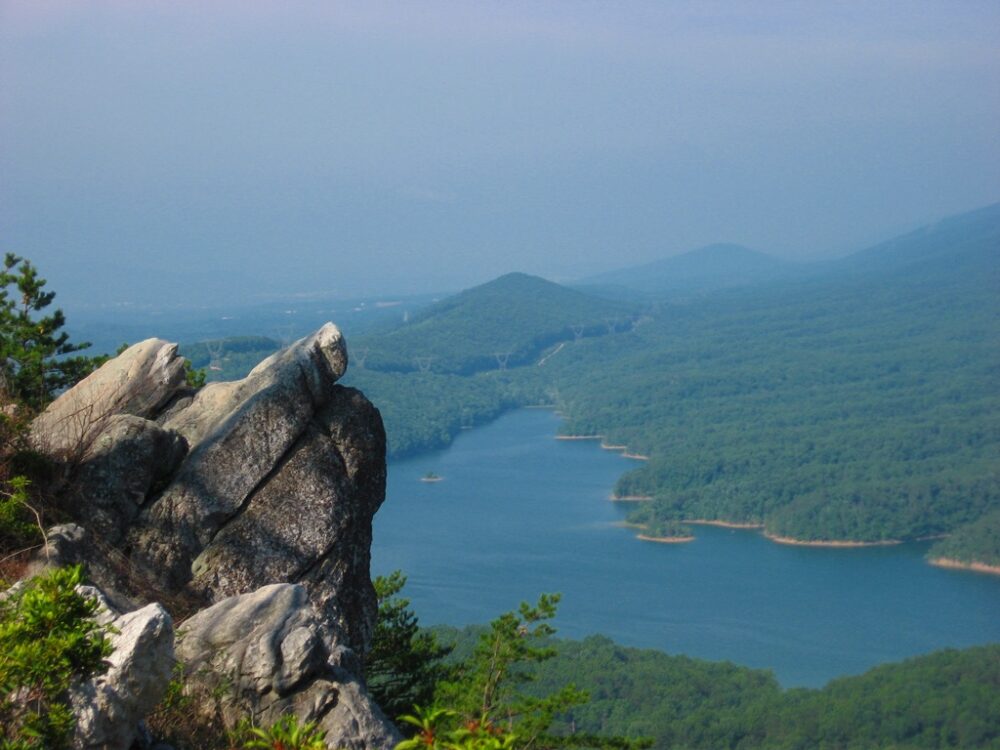We have much more to do and your continued support is needed now more than ever.
Heirs to the Land: Black Land Loss, Recovery, & Stewardship
The story of a family fighting to keep their family legacy and restore harmony to ancestral land.
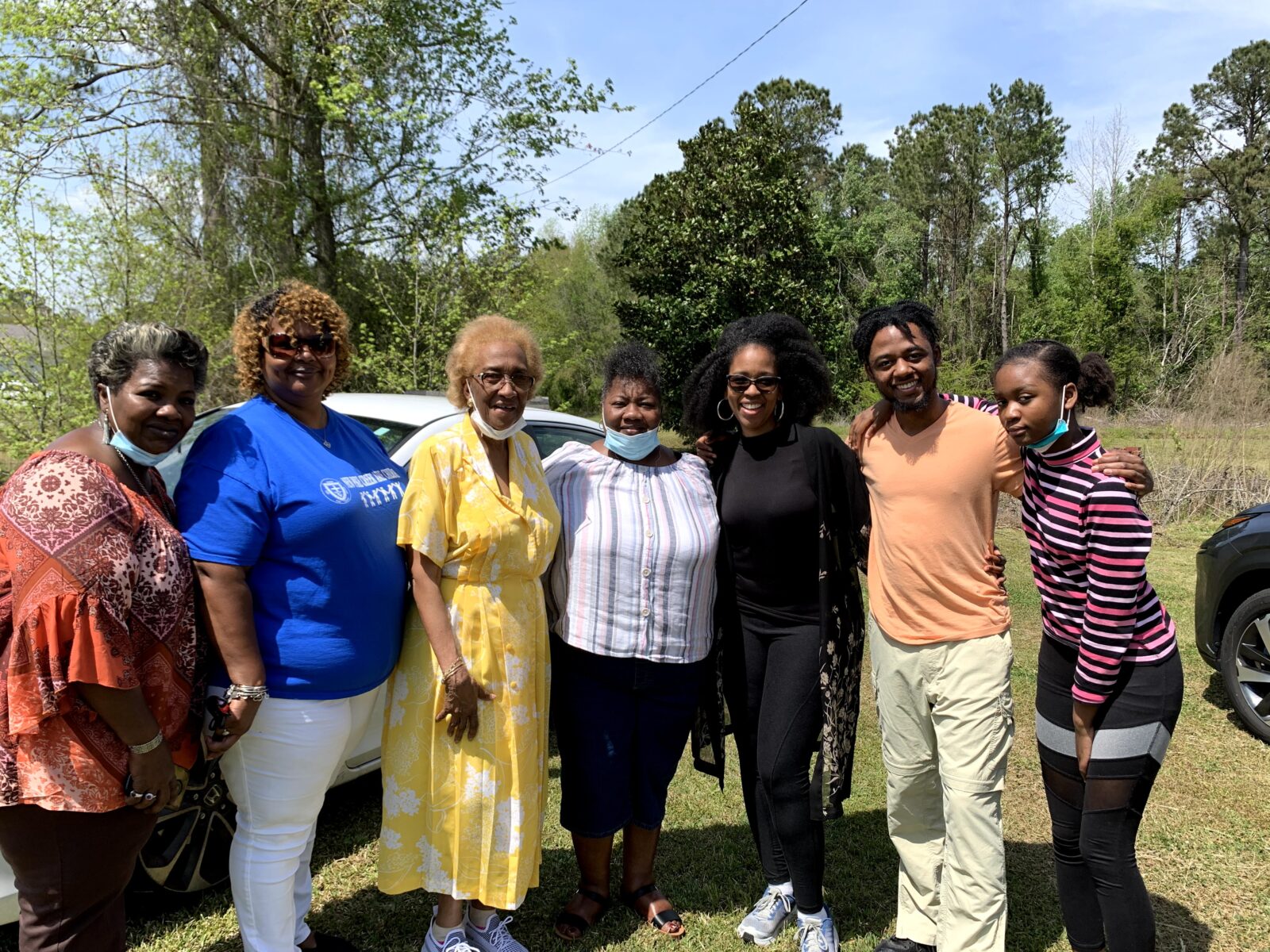
The National Wildlife Federation works directly to address the issue of Black land loss and ownership—a centuries-long battle that stifled the progress of newly freed people in the 1800s that continues to disproportionately affect Black families.
In 1865, General William T. Sherman issued the Special Order 15, more commonly known as “40 Acres and a Mule.” This order sparked hope for economic independence by allocating confiscated Confederate land to newly freed Black families. However, President Andrew Johnson overturned the order shortly thereafter, returning much of the land to its former Confederate soldiers and significantly hampering Black land ownership.
Despite obstacles, land stewardship prevailed among Black farmers and families who worked to acquire land by pooling resources to purchase parcels. Farmers drew upon their African heritages and knowledge of the land and experience gained during their time working the land during enslavement, such as crop diversification, soil conservation, managing livestock, and tending to the needs of plants and ecosystems throughout the seasons. Black farmers and landowners have always known that when you give to the land, the land gives back.
However, due to the intended outcomes of slavery, many beneficial and sustainable land management traditions practiced by Indigenous Americans and African Americans have been lost to industrial, extractive, monoculture systems that leave the land dry, barren, vulnerable to erosion and desertification, and unable to provide the habitat needed for wildlife to thrive.
National Wildlife Federation’s Southeast Forestry Program—and many other federal, state and non-profit initiatives—work to provide landowners with the outreach, networks, and resources to keep their forests healthy and viable in the family.
Below is one woman’s story of faith and family ties to land in the American South. She shares the ongoing struggle, collective grit, and knowledge needed to keep and steward the land.
The spirit of land and family endures
Burgaw, North Carolina, is a place of dreams and ancestry. My family traces our ancestry to Pender County where my great-great-great grandmother and father were enslaved, and where their descendants continue to live and create community generations later. Burgaw is a small town, close to the coastline, and near the larger and more well-known city of Wilmington, where members of my family sharecropped, farmed, and foraged a 50-acre plot of land for the last 100+ years.
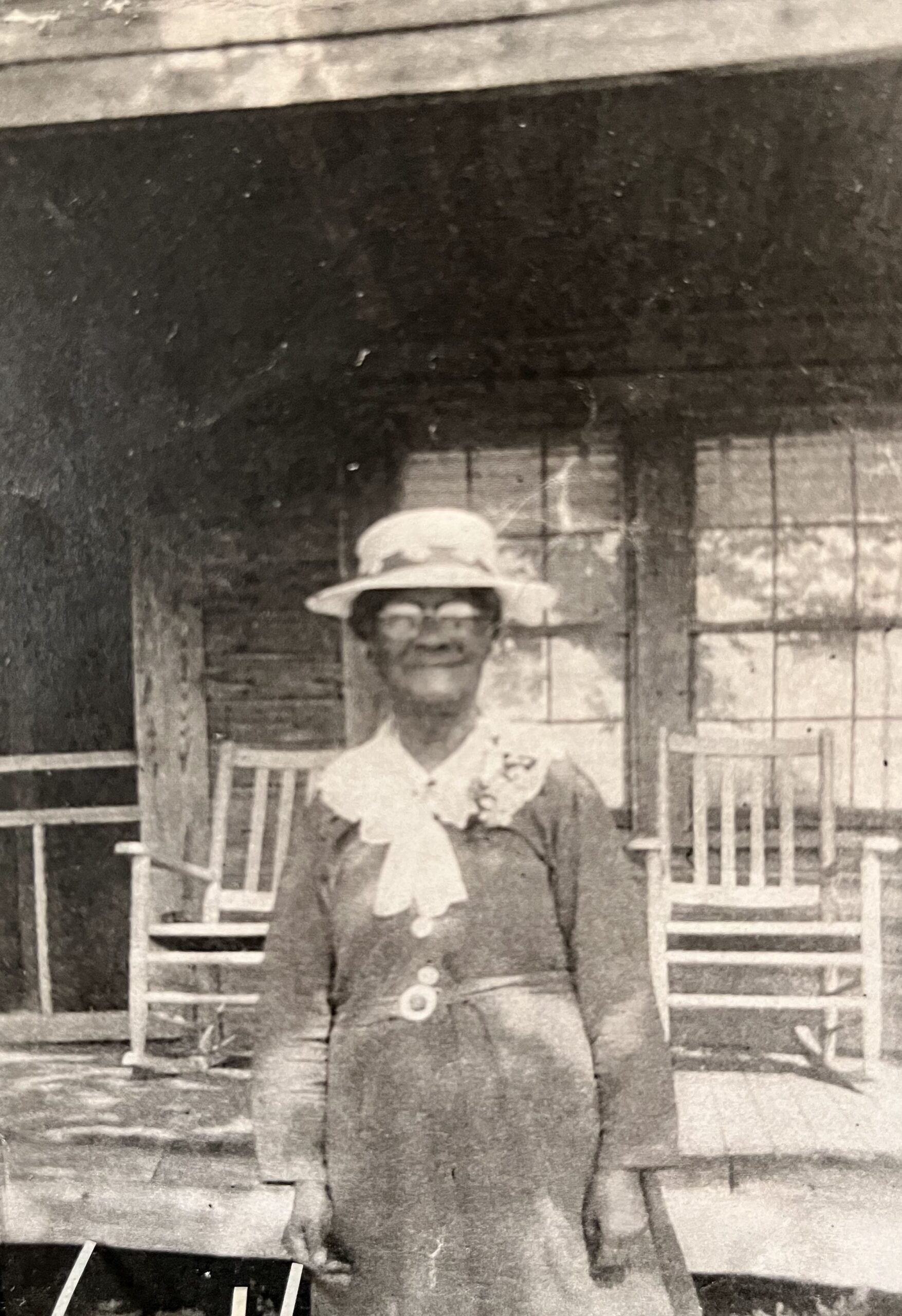
I visit our land in Burgaw with my family every other summer to see family members and maintain connections to this part of my cultural heritage. This small rural town seems to be alive with my family, who know me, and others who don’t. Everyone who calls me cousin can be traced back to my great-great-grandmother, Hattie Everett, who is always described as a devout woman, modest in dress and speech, and a humble engineer of community.
Warm greetings and standstill conversations with Black folks at the Piggly Wiggly supermarket remind me that blood ties are not as important as the spirit of kinship. As I meet known and unknown kin, I am enraptured by our joy and largeness. Still surviving, still laughing, still gathering, still dressing, and still telling our stories.
Driving down the block, I saw a bottle tree in a neighbor’s yard, and smiled to myself, thinking about this protective spiritual practice in the Black Lowcountry, and then holding my tongue for family members who might label this practice as Pagan and dangerous.
The synchronization of our spiritual traditions is often buried in my family’s evangelical identity but is part of our faith walk across generations. We come from a people who intentionally remembered native lands in Africa and, over multiple generations, weaved these within new cultural formations of conjure, medicine, superstition, and elemental healing oriented toward liberation and protection from capture. These memories are held by the land and waters, the witness of trees, the record keeper of soil, and the wind whispering for those who seek.
Our plot of land is mainly lawn, except for the initial greeting of magnolia as we drive down a dirt path leading to a homely white trailer. Inside smells sweet and a little dank, the air thick with humidity and collected dust. The first thing we do is clean, repair what isn’t working, and wash the dishes and counters in the kitchen to prepare our home for the next week.
The loving care and attention in my grandmother’s taste for lace doilies and curtains make the trailer like a dollhouse. She inherited it from my great-aunt and remains the matriarch—taking primary stewardship of this homeplace. As soon as she arrives in Burgaw, my grandmother becomes lucid with childhood memories, which spill over in long form while eating at the kitchen table.
When describing our legacy, my grandmother often talks about how we were farmers. Her mother, Eleanor, was one of eleven children raised on a farm. They would take up a mule and cart before dawn, tend to watermelon and peanuts, and pick cotton, tobacco, and beans from sunrise until sunset. My great-great-grandmother, Hattie, led the daily schedule and knew by looking at the sun it was 12 o’clock and time to pray. She held a prayer meeting two days a week, where the spirit of the Lord would meet them in praise that would shake the house, making hallowed ground.
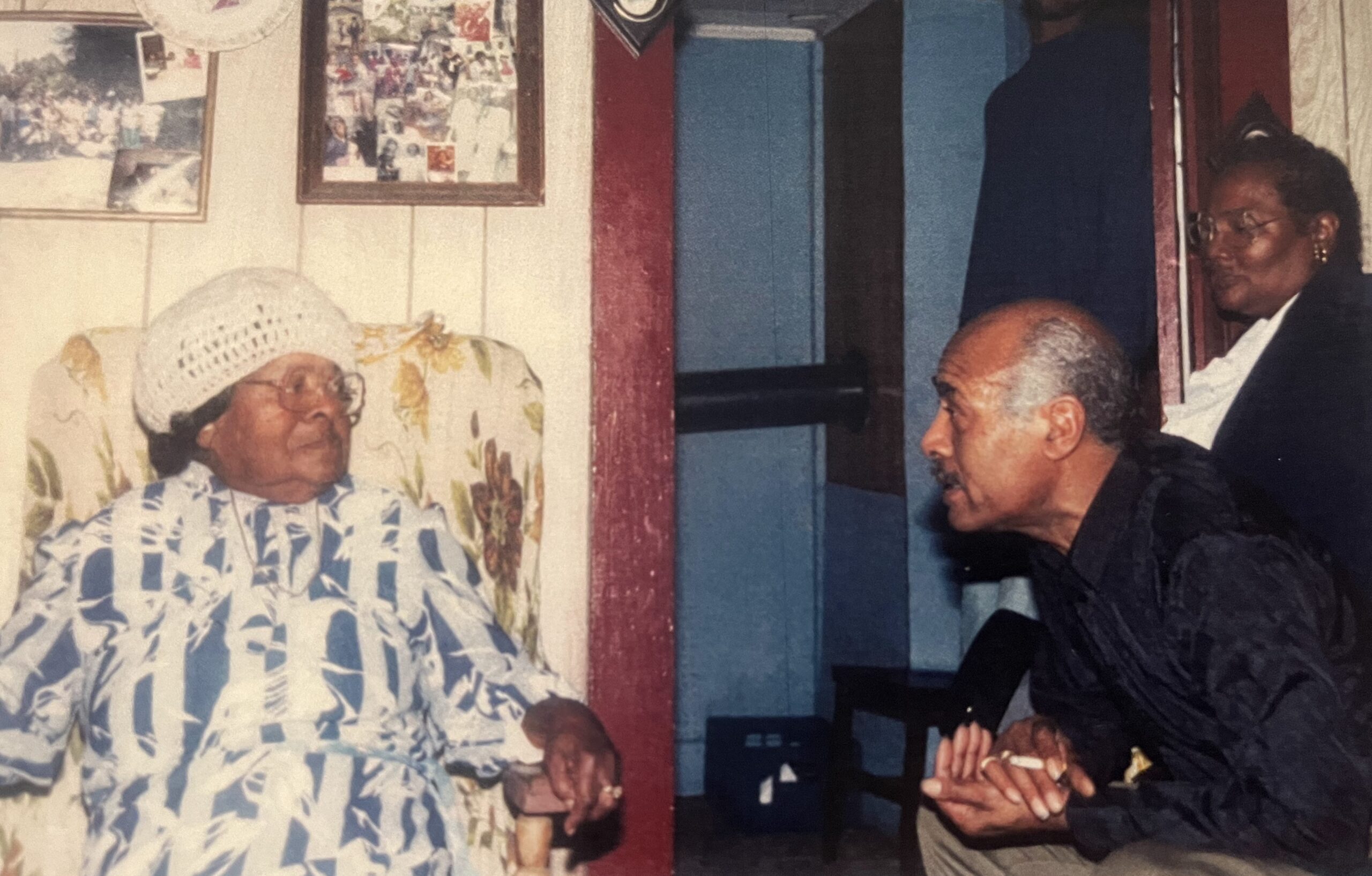
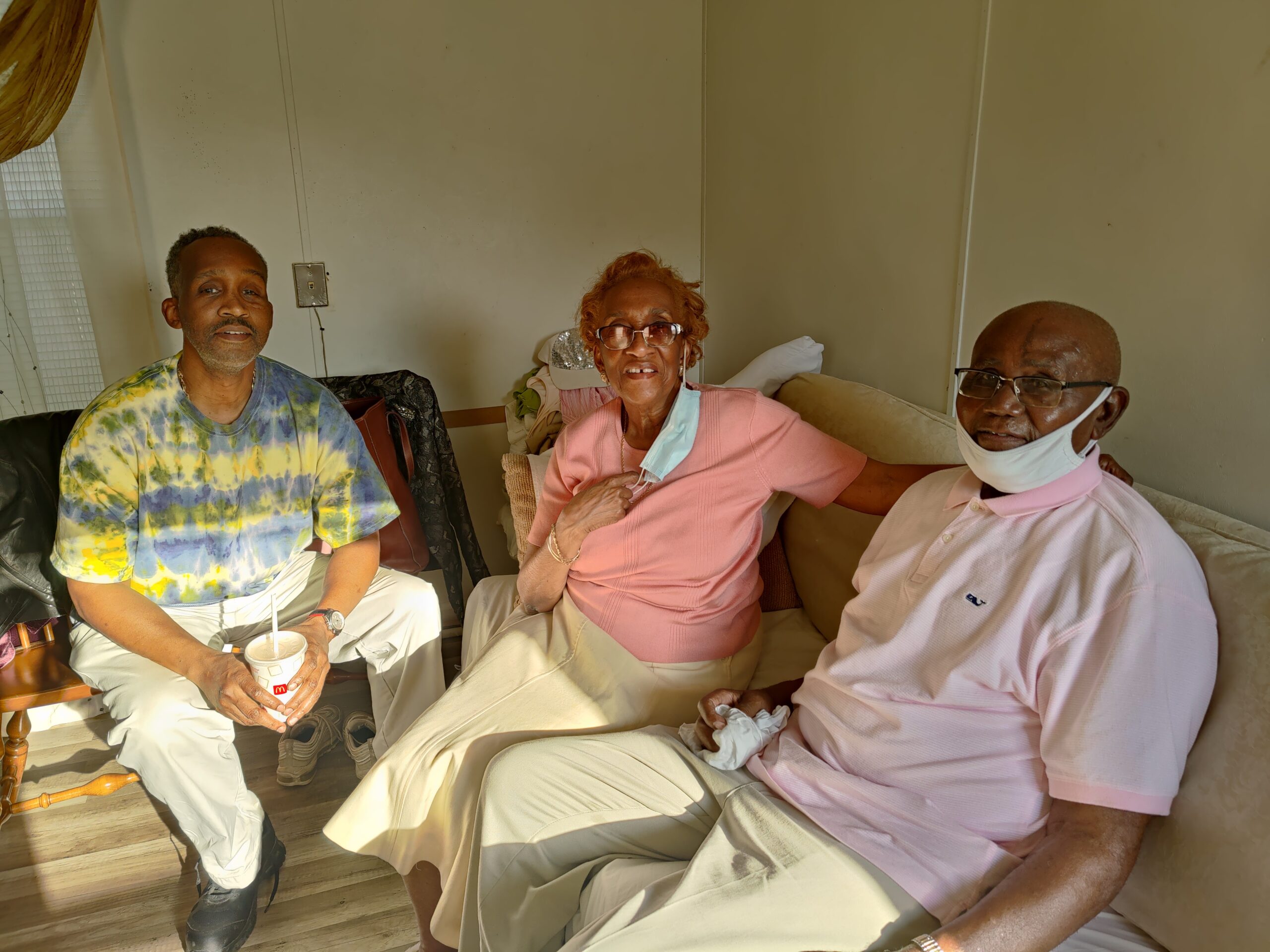
| Right: To the left, my uncle Raymond; to the center, my grandmother Doris; and to the right, my great uncle Ben in our trailer.
This land memory is a reciprocal kind of healing, as my grandmother weaves my ancestors’ names back into the land, she also allows the land to speak. As she brings the land alive, she also remembers herself. And in her voice is a desire for her children and children’s children to protect this land connection.
The vulnerable nature of heirs’ property
We have our land in heirs’ property, passed to my formerly enslaved forefather without a clear legal title, co-owned by all his descendants. Like many families experiencing emancipation, my family had no capital or tools to build up their economic condition, except for this land. So my family sharecropped for several other white families, and also worked their own. The flexible and collective nature of heirs’ property enabled many Black Americans to maintain ownership of their land.
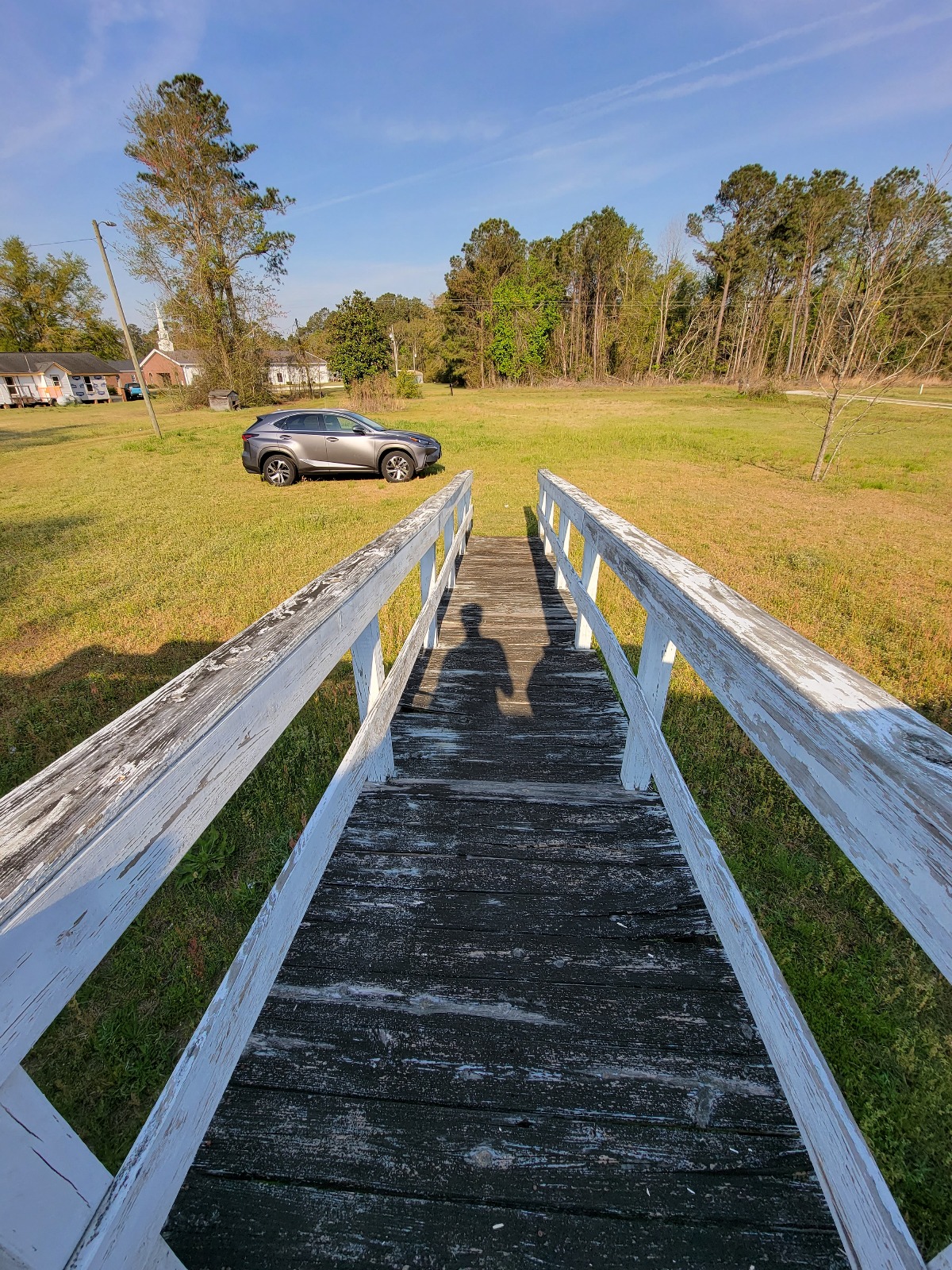
Years later, with more than one hundred co-owners, our property remains vulnerable to being taken without our consent through a forced partition sale, where any co-owner, including a non-family member, can force the sale or division of the property. Predatory property developers capitalize on the co-ownership of heirs’ property to force these sales.
Because my family doesn’t have the capacity for everyday management, we have already lost some parts of our land over the years because certain family members sold their land shares, or neighbors began to encroach on the land. Now, threats of further encroachment from interested buyers and surveyors on the land have left my family riddled with anxiety over the future of our land rights.
My family accessed free legal counseling with the Land Loss Prevention Project (LLPP), founded by Savi Horne. Through LLPP’s support, we are taking steps to secure our land in a limited liability company (LLC) so that we can pass down this sacred land connection for generations.
Protecting the land by coming together
We began by dedicating Sunday afternoons to this work and creating a spreadsheet to list all the direct descendants of the property who historically and currently hold a share of ownership. With each name arrives a story unraveling into other unknowns and disputes, some of which brought our genealogical search to an impasse. I realize how critical record-keeping is, and begin to hold each meeting like a hopeful prayer, mindful to record the voices of my uncles and aunts who remember.
My grandmother, aunts, and uncles helped me to feel the past lives of farming I struggled to imagine existed. Knowing old stories, I can thank our magnolia tree for its witness over my family. I can go to the river in the backwoods and imagine my uncles making stump liquor or taking the boat out for fishing. Their stories trouble the phrases of “vacant land” and “unoccupied territory” that erase its people.
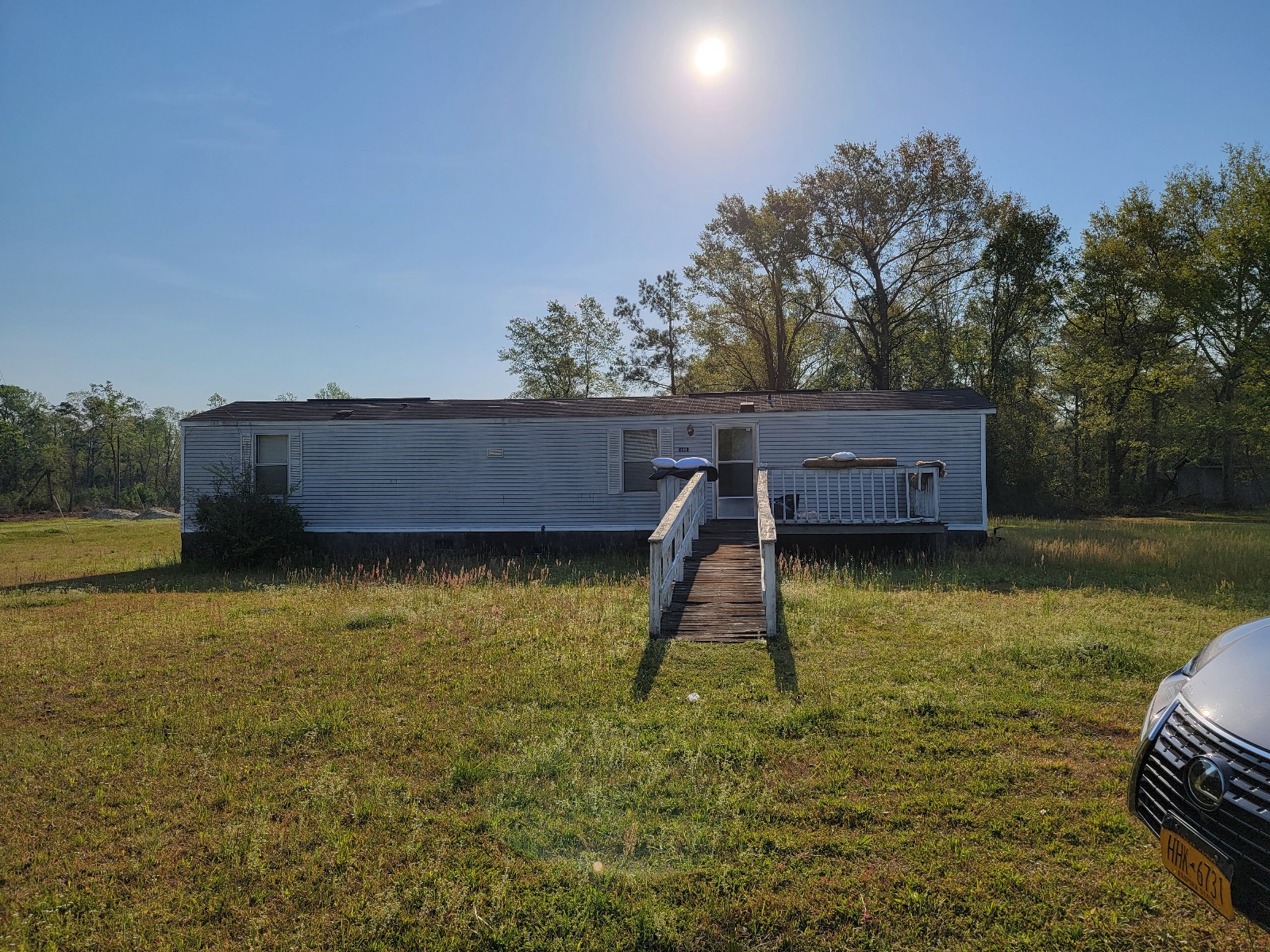
Ongoing struggles for clean air and water
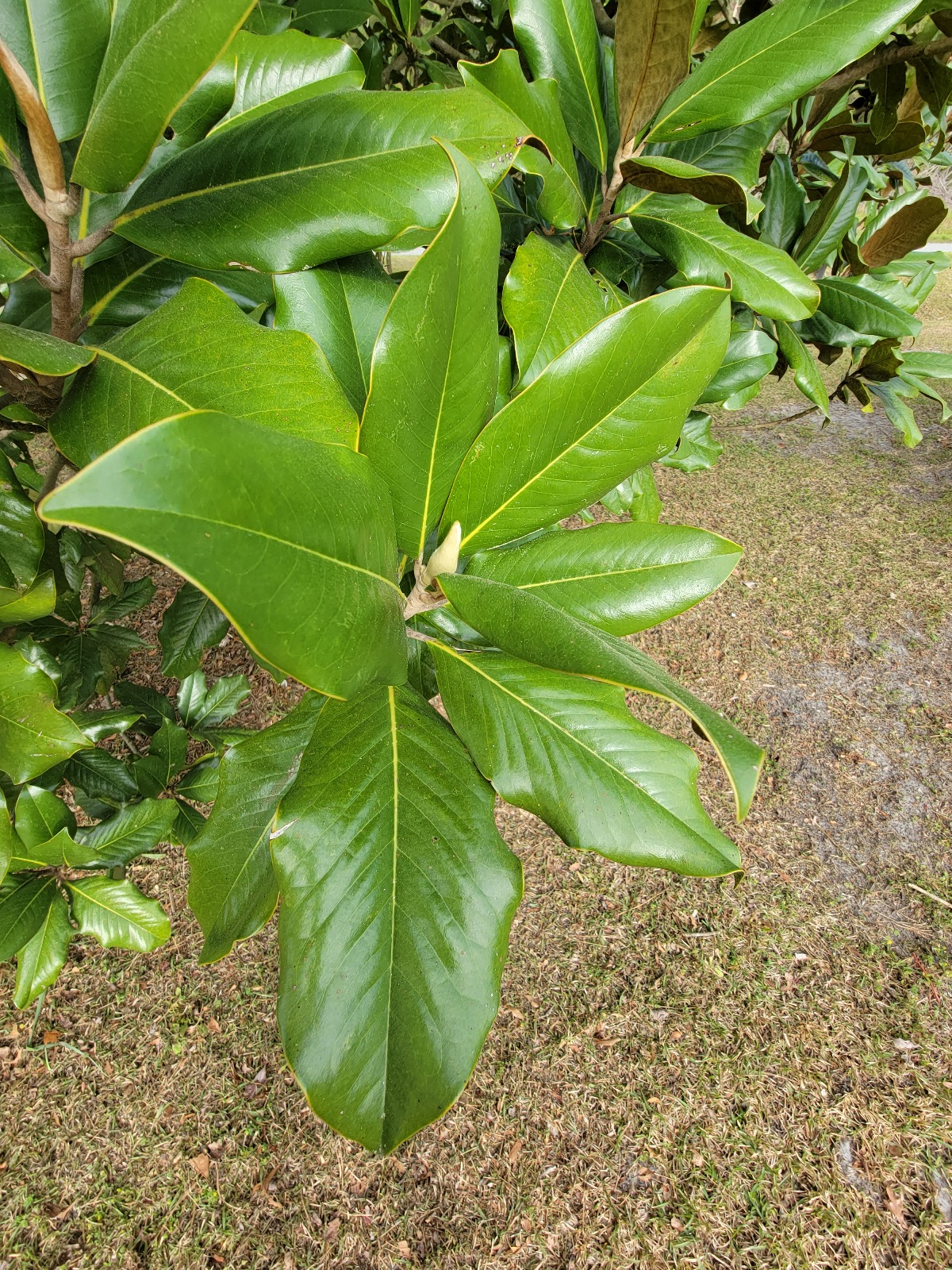
Our part of Burgaw is invisible to the state’s environmental protections. My family has been experiencing poor water quality for years because of unregulated well water and toxic runoff from nearby large-scale pig farms most prevalent in Black and lower-income neighborhoods. Fertilizers, pesticides, and pig waste pits of feces, urine, and blood—which overflow or leak during North Carolina’s increasingly severe hurricane seasons—affect the drinking water of local communities leading to detrimental health outcomes.
While we work toward formal legal tenure, I also know that deeply entrenched environmental injustices prevent this area from becoming a viable living space for me and future generations. My family continues to bring these issues to local governments and municipalities to change regulations around industrial agriculture and implement clean water policies.
I share this personal story to honor farmers, growers, and environmentalists who held place-based and spiritual knowledge relying on a certain intimacy with the earth. Their knowledge circumvented systemic, unjust structures and passed on important values of stewardship and community care.

